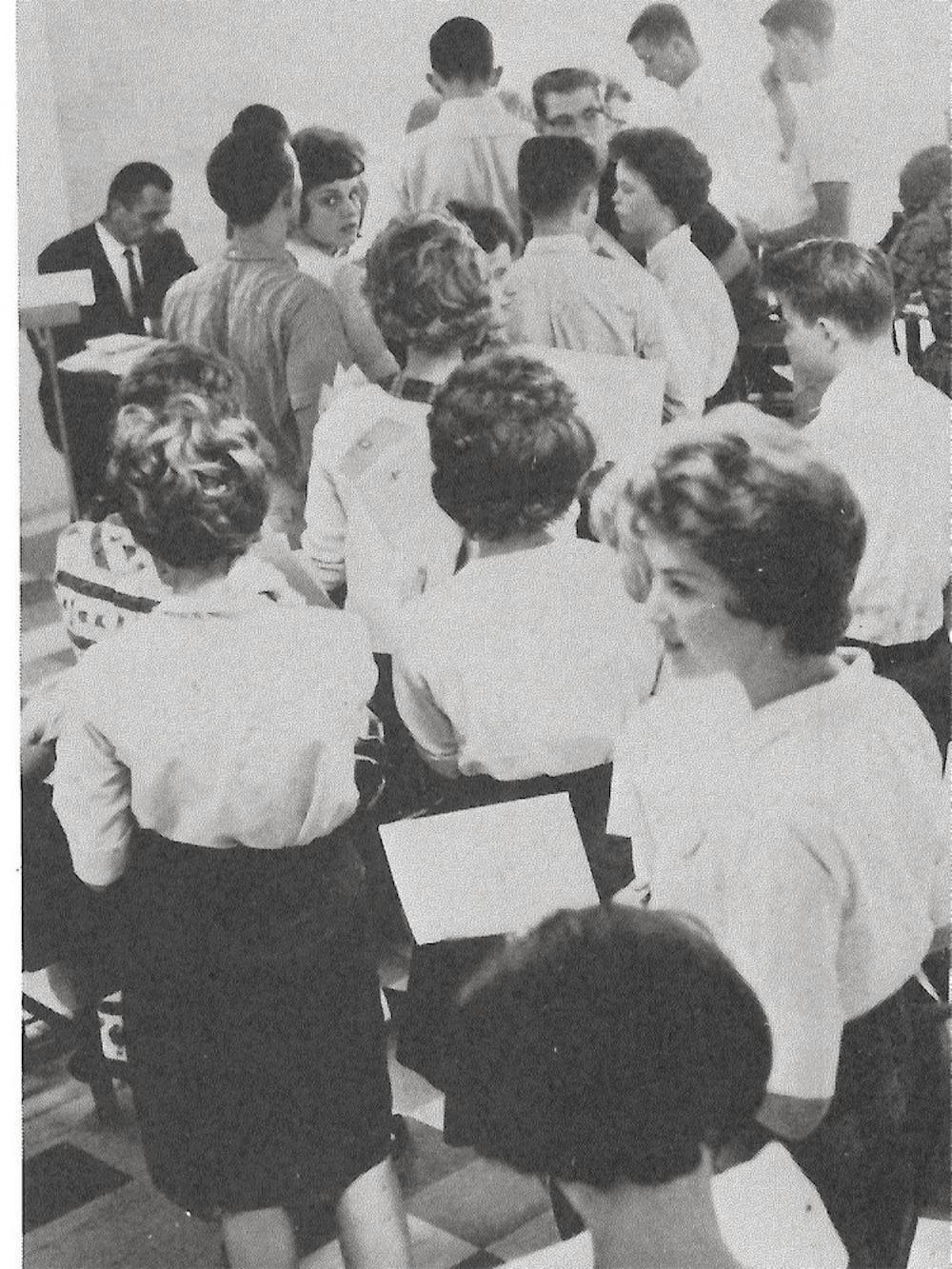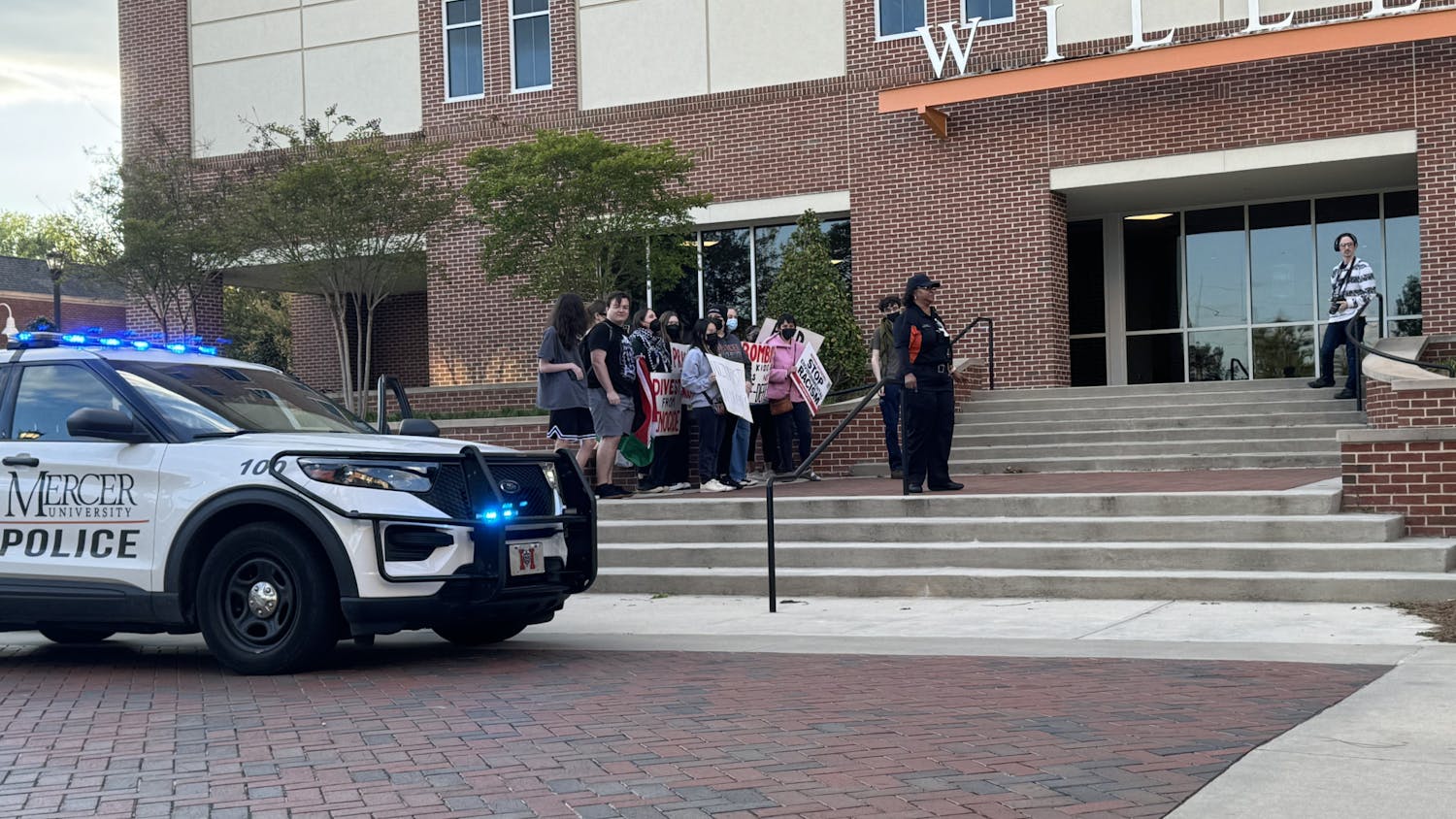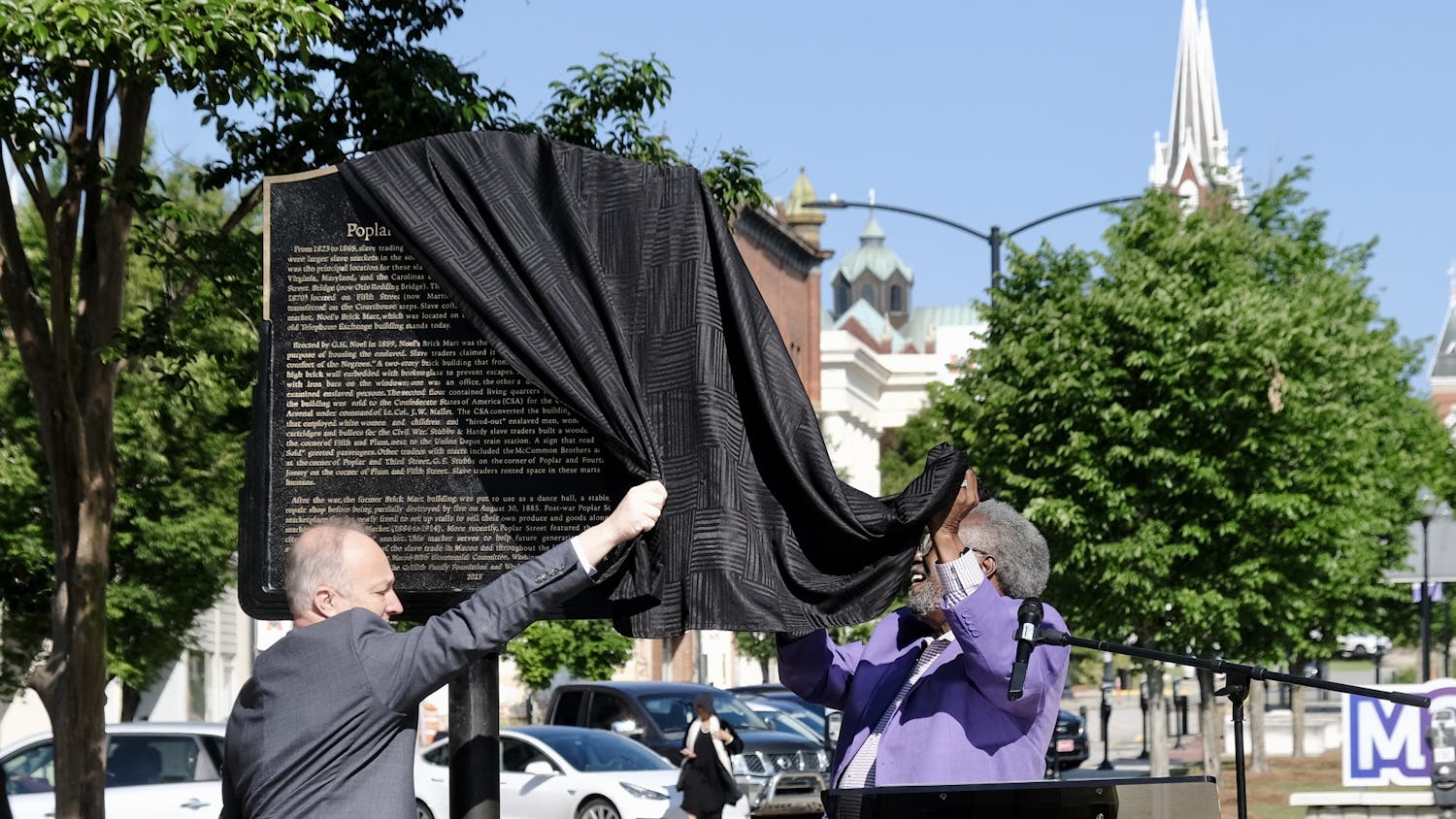As students scramble to meet with their advisors and figure out what to do with their lives, registration looms ever closer on the calendar. It’s not a new worry. Students at Mercer were stressing about signing up for classes long before MyMercer was a twinkle in anybody’s eye.
The Cluster headlines ranged from “Registration? It’s simple!” in 1949 to “Students Find Hectic Ordeal at Registration” in 1969.
In the 1948 registration process, a student would have to get in several different lines and have approval from numerous advisers before getting into classes.
They would have to do the process all over again if the classes ended up being full by the time a student arrived at the final step.
In a 1948 satirical piece in the The Cluster, managing editor Jack Perry describes a possible, dreadful series of events where a student gets so panicked during the process that he tries to escape, but the angry mob of students attack and kill the student reporter.
Although no one was harmed physically in that registration year, emotional damage was obvious through the words of the writers.
Even as the world moved toward the digital age, students struggled with registering for classes.
In the 1969 spring semester, students registered on the first day of classes which led to long lines and students missing their first and second days of classes, according to an article in The Cluster.
The Cluster included in this issue a letter from a student written to the Office of the Registrar voicing his concerns about computerized registration.
The student said that he felt strongly that a computer could not decide the needs of the students sufficiently.
“Who gets to take what when should be a matter discussed between individual professors and students,” said Cal Gough, Class of 1970. “Nobody likes registration, but the computer may not be the answer.”
Computers and registering systems have since improved, and the long lines outside of the Office of the Registrar have dwindled.
Although the process remains stressful at times, Edward Weintraut, associate dean of the College of Liberal Arts, said, during registration for courses in Spring 2016, that the dean’s office is proactive in taking the measures necessary to ensure students have the credits they need.
Gary Blackburn, chair of the art department, said, also during Spring 2016 class registration, that they have had problems with not having enough seats in classes for the amount of students who want a class.
“Obviously, anytime a student wants to get into a class, and you have to say, ‘No,’ that’s not a good thing,” Blackburn said. “You would like to have enough seats that saying no is the exception to the rule.”
Throwback Thursday: How Mercer students registered before computers

Photos from the Cauldron, Mercer's yearbook, show students waiting in line to register for classes.




